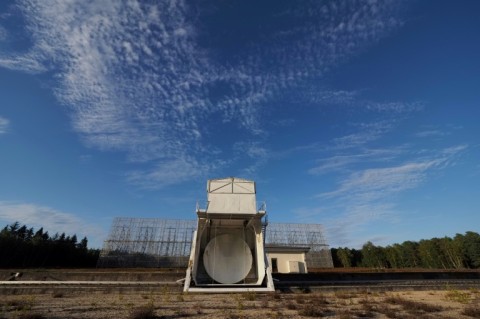
PARIS - Astronomers across the world announced that they have found the first evidence of a long-theorised form of gravitational waves that create a "background hum" rumbling throughout the universe.
The breakthrough -- made by hundreds of scientists using radio telescopes in North America, Europe, China, India and Australia after years of work -- was hailed as a major milestone that opens a new window into the universe.
First predicted by Albert Einstein more than a century ago, gravitational waves are ripples in the fabric of the universe that travel through everything at the speed of light almost entirely unimpeded.
Their existence was not confirmed until 2015, when the US and Italian observatories detected the first gravitational waves created by two black holes colliding.
These "high-frequency" waves were the result of a single violent event that sends a strong, short burst rippling towards Earth.
But for decades scientists have been searching for low-frequency gravitational waves, thought to be constantly rolling through space like background noise.
Joining forces under the banner of the International Pulsar Timing Array consortium, scientists working at gravitational wave detectors on several continents revealed on Thursday they have finally found strong evidence of these background waves.
"We now know that the universe is awash with gravitational waves," Michael Keith of the European Pulsar Timing Array told AFP.
For the new research, radio telescopes around the world were aimed at a total of 115 pulsars throughout the Milky Way.
Scientists then measured the incredibly small differences in the timing of the pulses, searching for telltale signs of gravitational waves.
French astrophysicist Antoine Petiteau said they were able to "detect changes of less than one-millionth of a second across more than 20 years".
Maura McLaughlin of the US Pulsar Search Collaboratory programme said they were "awestruck" after first seeing evidence of the waves in 2020.
It was "really a magical moment," she told a press conference.
The early evidence was consistent with Einstein's theory of relativity and science's current understanding of the universe, the scientists said.
But they emphasised they have not yet definitively "detected" the waves, because they have not reached the gold-standard five sigma level of certainty. Five sigma indicates that there is a one-in-a-million chance of something being a statistical fluke.
"We're frustratingly just shy of the mark," Keith said, adding that there was a 99-percent probability that the evidence points to gravitational waves.

